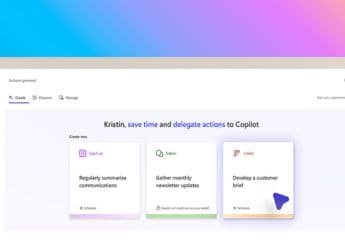- Home
- Internet
- Internet Features
- What Is an E Passport? Benefits, Features and How to Apply in India
What Is an E-Passport? Benefits, Features and How to Apply in India
E-Passports are designed to improve identity verification and reduce fraud.

Photo Credit: Unsplash/ Global Residence Index
What Is an E-Passport, Explained: Here's everything you need to know about e-passports in India
An e-passport, sometimes referred to as a biometric or digital passport, is essentially a modern upgrade to the traditional travel document. Although it looks very similar on the outside, the real difference lies inside, where smart technology replaces the reliance on printed information. Several countries are improving their border control systems, and this has led to the e-passport replacing the traditional passport in many places. The newer format is also designed to make international travel safer and more convenient.
What is an E-Passport?
Your personal details, including your name, birth date, passport number and a digital photo, are stored securely on a small wireless chip inside an e-passport. To strengthen identity checks even further, many countries also include additional biometric information, such as fingerprints or iris scans, which helps make verification more dependable and reduces the risk of fraud. These extra details make it much easier to confirm someone's identity and much harder for anyone to fake or misuse a passport.
Biometric passports are about much more than simply adding new tech. They are now widely used because airports are busier, security needs are higher, and travellers need faster and more reliable identity checks. Since e-passports can be scanned instantly, they work smoothly with automated immigration gates and faster border-control systems. For travellers, this usually means shorter lines, fewer delays and better protection of personal data. For border officials, it provides stronger tools to detect fake documents and prevent impersonation, helping keep overall security tighter.
How is it Different from a Normal Passport?
A regular passport holds your information only on its printed pages. An e-passport does that too, but it also carries the same information digitally on an encrypted chip. This helps immigration systems read your details instantly, which means faster verification and fewer chances of mistakes or fraud. With an e-passport, automated e-gates at airports can scan your document within seconds, something a normal passport cannot do. While both look similar, the e-passport is far more secure and efficient for modern travel.
How to Apply for an E-Passport in India?
Applying for an e-passport is quite similar to applying for a regular passport.
- You must first gather all required documents, including proof of identity, proof of address, proof of date of birth and, if applicable, your old passport.
- Next, you need to create an account on the Passport Seva website and log in to begin your application.
- Once logged in, you should fill out the online form carefully, entering accurate details and reviewing the information before submitting it.
- After submitting the form, you must pay the applicable fees online and book an appointment at the nearest Passport Seva Kendra or Post Office PSK.
- On the day of the appointment, you have to visit the centre with your original documents, where your biometrics, photograph and document verification will be completed.
- After your appointment, you will undergo police verification, during which officers may visit your address to confirm your details.
- You can track the progress of your application on the Passport Seva website using your file number.
- Once approved, your e-passport will be printed and delivered to your registered address by courier.
- After receiving it, you should check all personal details on the passport and ensure the chip-enabled cover is intact.
Benefits of E-Passport
- One of the main advantages of an e-passport is faster immigration, as your details can be scanned electronically within seconds.
- With an e-passport, you can use automated e-gates at many international airports, which leads to shorter queues and quicker movement through checkpoints.
- E-passports offer stronger security because the digital information stored on the chip is encrypted and far more difficult to tamper with than printed details.
- They provide better protection against identity theft by securely storing your personal and biometric data.
- The encrypted chip also makes it much harder for anyone to forge or misuse a passport.
- Overall, e-passports make travel smoother, more secure and better suited to modern, tech-driven border control systems.
FAQs
1. What is an e-passport?
An e-passport is an upgraded version of the traditional passport that includes a contactless microchip storing your personal information and biometric details. It looks similar to a regular passport but offers enhanced security and faster verification.
2. How is an e-passport different from a normal passport?
A normal passport contains only printed information, while an e-passport stores the same details digitally on a secure, encrypted chip. This allows for quicker scanning at immigration and makes it harder to forge or tamper with.
3. What information does the chip in an e-passport store?
The chip typically stores your name, date of birth, passport number and a digital photograph. Many countries also include biometric identifiers such as fingerprints or iris scans for more accurate identity verification.
4. How do I apply for an e-passport in India?
You need to apply through the Passport Seva website, fill out the online form, book an appointment, complete document verification and biometrics at a Passport Seva Kendra, undergo police verification and then wait for the passport to be delivered.
5. What are the main benefits of using an e-passport?
E-passports enable faster immigration, allow use of automated e-gates, improve security through encrypted data, reduce the risk of identity theft and make travel smoother and more efficient overall.
Get your daily dose of tech news, reviews, and insights, in under 80 characters on Gadgets 360 Turbo. Connect with fellow tech lovers on our Forum. Follow us on X, Facebook, WhatsApp, Threads and Google News for instant updates. Catch all the action on our YouTube channel.
Related Stories
- Samsung Galaxy Unpacked 2025
- ChatGPT
- Redmi Note 14 Pro+
- iPhone 16
- Apple Vision Pro
- Oneplus 12
- OnePlus Nord CE 3 Lite 5G
- iPhone 13
- Xiaomi 14 Pro
- Oppo Find N3
- Tecno Spark Go (2023)
- Realme V30
- Best Phones Under 25000
- Samsung Galaxy S24 Series
- Cryptocurrency
- iQoo 12
- Samsung Galaxy S24 Ultra
- Giottus
- Samsung Galaxy Z Flip 5
- Apple 'Scary Fast'
- Housefull 5
- GoPro Hero 12 Black Review
- Invincible Season 2
- JioGlass
- HD Ready TV
- Laptop Under 50000
- Smartwatch Under 10000
- Latest Mobile Phones
- Compare Phones
- Lava Agni 4
- Wobble One
- OPPO Reno 15 Pro
- OPPO Reno 15
- Vivo Y500 Pro
- Realme GT 8 Pro Aston Martin F1 Limited Edition
- Huawei Mate 70 Air
- Moto G57
- Asus ProArt P16
- MacBook Pro 14-inch (M5, 2025)
- iQOO Pad 5e
- OPPO Pad 5
- Fastrack Revoltt FR2 Pro
- Fastrack Super
- Acerpure Nitro Z Series 100-inch QLED TV
- Samsung 43 Inch LED Ultra HD (4K) Smart TV (UA43UE81AFULXL)
- Asus ROG Ally
- Nintendo Switch Lite
- Haier 1.6 Ton 5 Star Inverter Split AC (HSU19G-MZAID5BN-INV)
- Haier 1.6 Ton 5 Star Inverter Split AC (HSU19G-MZAIM5BN-INV)
-
 Grok 4.1 AI Model Tends to Show Sycophancy and Deception More Than Its Predecessor
Grok 4.1 AI Model Tends to Show Sycophancy and Deception More Than Its Predecessor
-
 Microsoft’s New Copilot Actions for Windows 11 Face Scrutiny Over Potential Security Implications
Microsoft’s New Copilot Actions for Windows 11 Face Scrutiny Over Potential Security Implications
-
 Meta SAM 3 Open-Source AI Models Can Detect, Track and Construct 3D Models of Objects in Images
Meta SAM 3 Open-Source AI Models Can Detect, Track and Construct 3D Models of Objects in Images
-
 Telegram Rolls Out Live Stories, Auctions for Gifts, Enhanced Liquid Glass UI for iPhone, and More
Telegram Rolls Out Live Stories, Auctions for Gifts, Enhanced Liquid Glass UI for iPhone, and More












